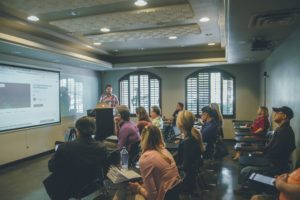I first learned about flipped learning when I was in my first day of my observation this semester. The teacher had students come to class with their notes done Cambridge style. The students would do reading and video watching before coming into class and be ready to discuss/enjoy the classroom. This technique has its pros and cons, like any teaching technique.

The main advantages of flipped learning is to prepare students with the knowledge they need to complete work in class. if the students arrive to class prepared they will be able to use class time effectively and be able to do the hard work that may require teacher assistance. This can allow for students to reach a deeper learning that they wouldn’t be able to attain without having the learning prior to classroom time. Therefore, allowing the students to have a level of autonomy in their learning, perhaps fueling collaboration between students and a more student-centered approach to learning.
Although there are many advantages to flipped learning there are also many disadvantages that may be exacerbated through this model. Not all students will have access to the same technology outside of the

classroom. Therefore when asked to participate in a flipped classroom the discrepancy in access will add to the digital divide the students experience. Another problem that may arise is students who do not participate in the flipped classroom model, or those who don’t have a perfect home life may not reap the same benefits the more privileged students are privvy to through this model. One last disadvantage of flipped learning is that it increases the amount of time students are required to sit in front of screens, which we know is not good for metal or physical health.
Flipped learning is more efficient use of time if students are motivated and willing to spend time working on class at home. However, it presents a divide between students based on their socio-economic status. If there was another option for students to receive prewritten notes if they were unable to do notes/videos at home it would be an ideal way to work through a majority of the clerical work associated with study. With these in mind flipped learning may not be the best to use in grade 9 and 10. I would reserve this model to use in grade 11 and 12, when students are more involved in choosing the classes they take, therefore, they would (hopefully) be more motivated to use their time to learn.
Happy Learning!